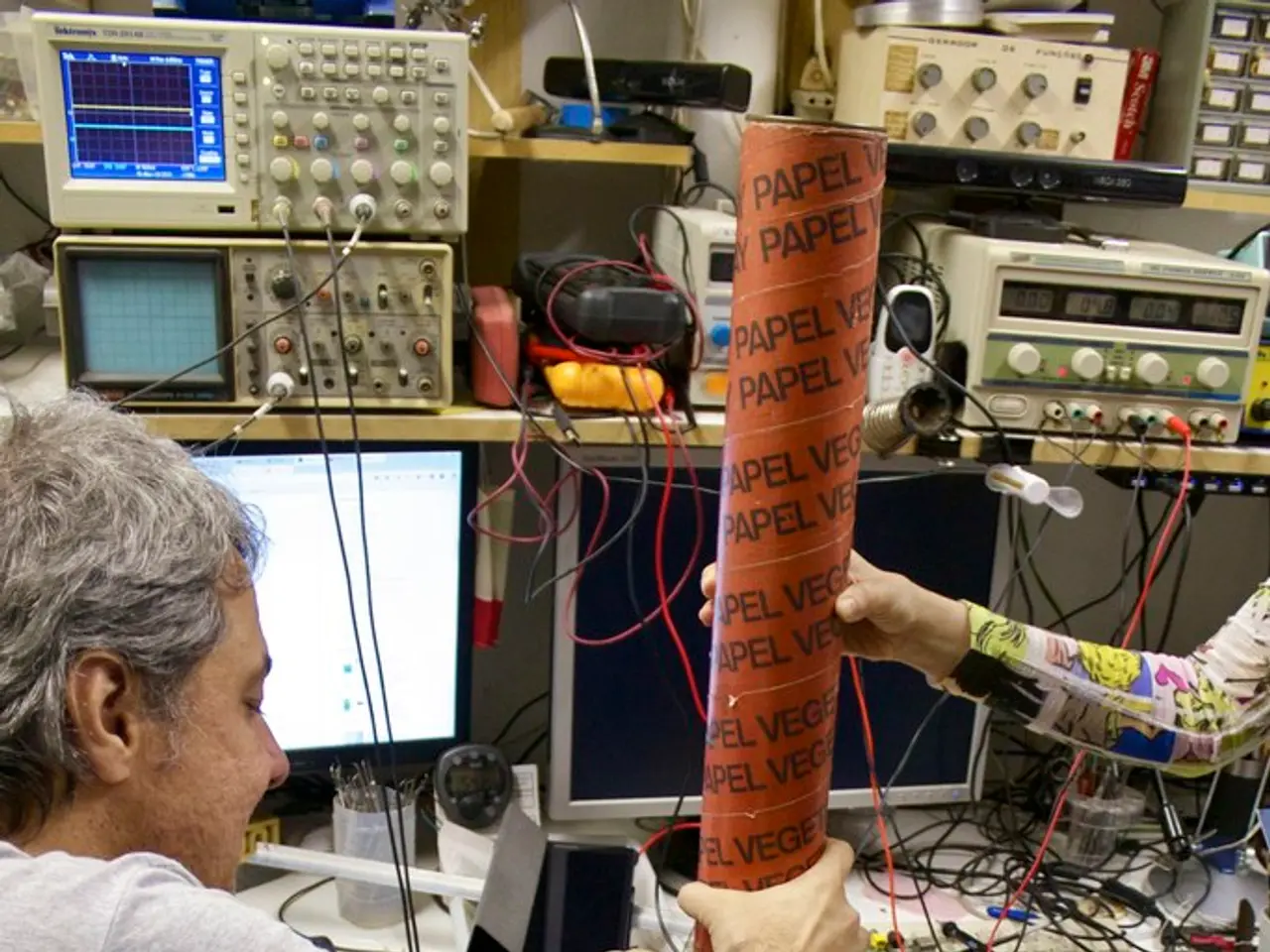Human-Computer Interaction Accessible to All: A Peek at Princeton's Recommended Literature on Human-Computer Interaction
In the realm of technology, the impact of visionary thinkers like Douglas Engelbart continues to resonate strongly. His groundbreaking 1968 demo, known as "The Mother of All Demos," showcased foundational concepts that underpin modern collaborative technologies such as Zoom and Google Docs [1][2][3]. Engelbart's pioneering work introduced interactive computing elements, including the computer mouse, graphical user interfaces (GUI), video conferencing, and collaborative real-time document editing, that have become fundamental to our interaction with computers.
Engelbart's vision was rooted in the belief that technology should augment human intellect and support collective problem-solving. This principle is evident in today's tools that enable remote teamwork and live content editing. As technology advances, the focus remains on enhancing human cognitive and collaborative capabilities rather than replacing them. This sentiment is particularly relevant in the ongoing debate on leveraging generative AI in education. Proponents advocate for AI as an assistive, augmentative tool to personalize learning and foster creativity, rather than simply as an automation or shortcut.
In parallel, the paper "Turkopticon: Interrupting Worker Invisibility in Amazon Mechanical Turk" by Lilly C. Irani and M. Six Silberman, presented at CHI 2013, addresses the labor dynamics of gig work, particularly on Amazon Mechanical Turk (MTurk) [4]. The authors present Turkopticon, a web browser extension designed for workers to publicize their experiences with MTurk employers. The tool allows workers to rate and review their employers on their reliability, fairness, and payment practices, aiming to foster more equitable employer practices and help employees make more informed decisions.
The paper emphasizes the importance of creating platforms for worker empowerment and transparency in the gig economy. It encourages a critical examination of ethical considerations in design, urging for a proactive commitment to transparency and accountability to safeguard the well-being and fair treatment of gig workers. The authors highlight the power imbalance between MTurk employers and workers, with employers sometimes exploiting workers by withholding payment post-task completion.
In this increasingly digital world, looking for more opportunities to creatively use technology to improve our person-to-person and mediated conversations can help us create more meaningful interactions than we would have without technology. Understanding the key arguments presented in papers like "Beyond Being There" by Jim Hollan and Scott Stornetta is crucial for recognizing how new technologies will impact the way we communicate with one another, allowing us to adopt new usage behaviors or be mindful of potential limitations and downsides [5].
TranscribeGlass, a new AR device that projects real-time captions, is an example of a technology that can make in-person interactions more accessible by augmenting the information we have access to. As we move forward, it is essential to continue exploring ways in which technology can bridge the gap between physical and technologically mediated experiences, ensuring fair treatment and empowerment for all users.
References:
- The Mother of All Demos
- The Mother of All Demos: 50 Years Later
- Douglas Engelbart's Demo: A Half Century Later
- Irani, L. C., & Silberman, M. Six. (2013). Turkopticon: Interrupting Worker Invisibility in Amazon Mechanical Turk. In Proceedings of the SIGCHI Conference on Human Factors in Computing Systems (CHI '13). ACM, New York, NY, USA, 3409-3418. DOI: https://doi.org/10.1145/2468356.2473096
- Hollan, J., & Stornetta, S. (2006). Beyond Being There: Presence in a Networked World. In Proceedings of the SIGCHI Conference on Human Factors in Computing Systems (CHI '06). ACM, New York, NY, USA, 139-148. DOI: https://doi.org/10.1145/1124348.1124366
Technology plays a significant role in advancing education-and-self-development, as demonstrated by the use of generative AI for personalized learning. In the spirit of Douglas Engelbart, proponents advocate for AI as an assistive, augmentative tool, rather than a replacement for human intellect.
Lifestyle and general-news covers a broad spectrum, but in this digital age, technology like TranscribeGlass, which helps make in-person interactions more accessible, falls under this category. Such technological advancements can create more meaningful connections and bridge the gap between physical and technologically mediated experiences.




